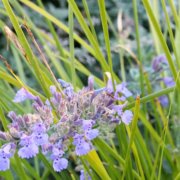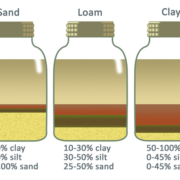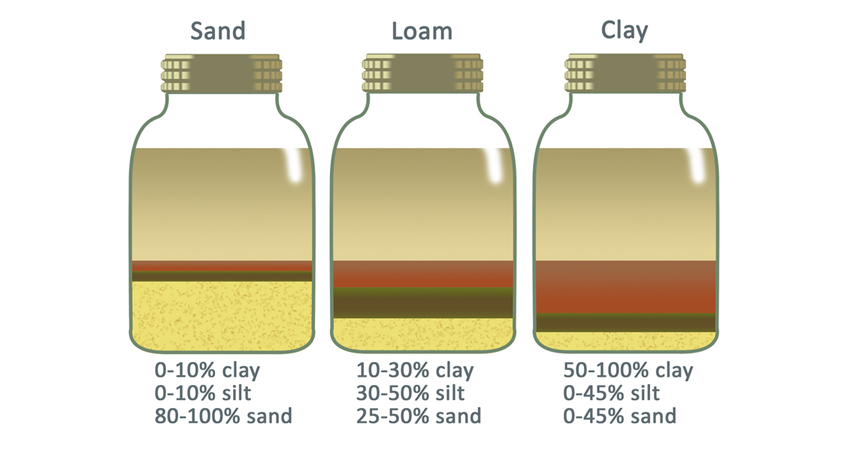The plants are thriving at Helix Water District’s demonstration landscape just eight months after the project was completed. The WaterSmart plants at the District’s administration office in La Mesa beautify the neighorhood while inspiring people to install sustainable, WaterSmart landscaping.
“Everything is growing in beautifully,” said Helix Water District General Manager Carlos Lugo. “We started with smaller plants to reduce costs and planned for growth. We’re happy to share this resource with our customers and community.”
Demonstration landscape includes water-wise gardens
The demonstration landscape includes three unique water-wise gardens on the streets around the building, including a Mediterranean garden on University Avenue, a desert landscape on Lee Avenue and a California native landscape along the building’s main entrance on Quince Street. Each garden started with smaller plants of varying colors, flowers and textures.
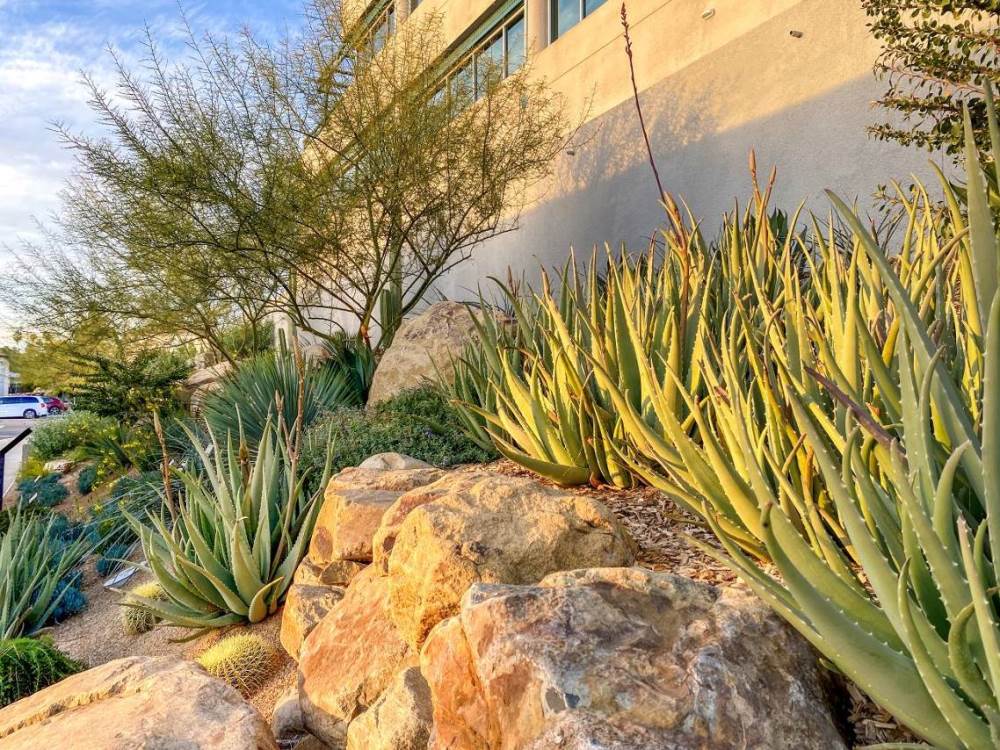
Desert landscape on Lee Avenue at Helix Water District in La Mesa. Photo: Helix Water District
“The grasses in our native garden are filling in the mulched areas, creating a soft meadow-like appearance,” said Lugo. “We are also seeing the canopies of the Palo Verde trees expanding, and underneath, the succulents and agaves are blanketing the hillside, filling the landscape with color and texture.”
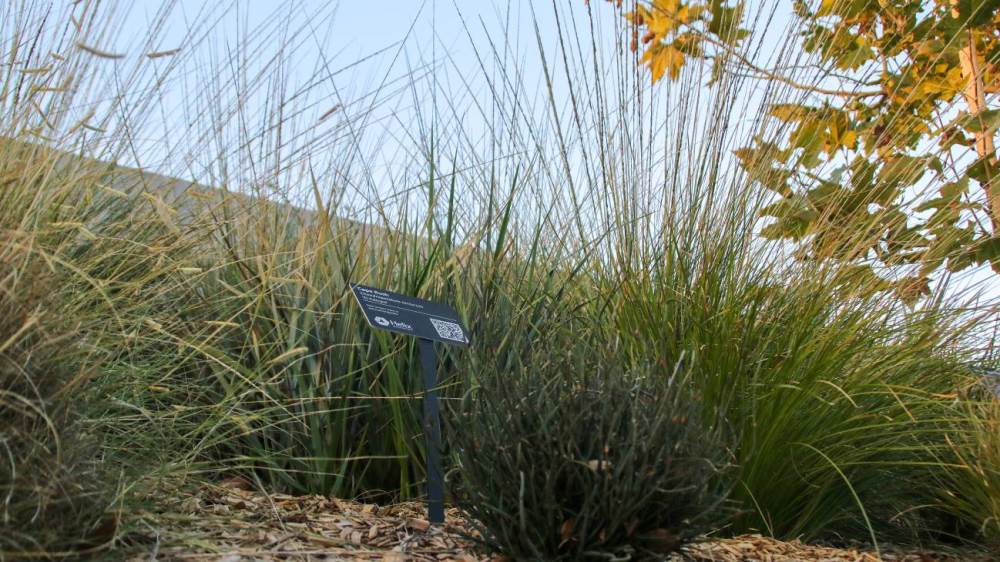
Grasses create a meadow-like appearance in some of the Helix Water District demonstration landscape gardens. Photo: Helix Water District
Plants provide wildlife habitat
The plants in all three of the gardens are adapted to San Diego’s climate and need half to a fifth of the water that a traditional lawn needs. In addition to requiring less water, WaterSmart landscapes also require less maintenance and provide habitat for local wildlife like honeybees, birds and butterflies.
In each garden, plant markers provide the name of each plant and a QR code, which when scanned with a smartphone, provide each plant’s name, sun and water needs, mature size and photo.
Customers can also use the district’s interactive webpage to make a list of their favorite plants and download each garden’s design plan. Information on efficient irrigation and rebate programs is also available.
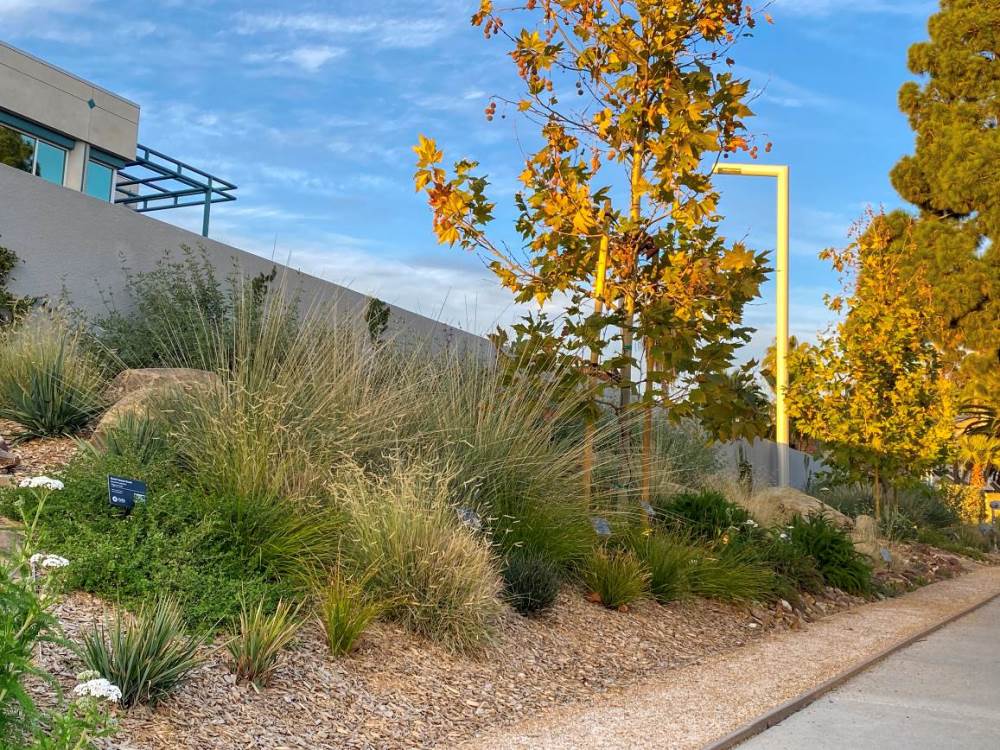
Native, water-wise plants thrive on Quince Street in one of the Helix Water District gardens. Photo: Helix Water District
The project was completed in June 2020 and partially funded through a grant from the Metropolitan Water District of Southern California.
Helix Water District provides water treatment and distribution for 277,000 people in the cities of El Cajon, La Mesa and Lemon Grove, the community of Spring Valley and areas of Lakeside – east of downtown San Diego. Helix is also a founding member of The Water Conservation Garden, a nearly six-acre water-wise demonstration garden in El Cajon.

